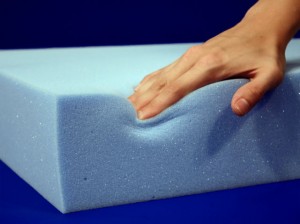No-Flip Mattress? That’s No Deal for Customers
One of the most recent trends in the bedding industry is the appearance of “no-flip mattresses.” On the surface, this seems like a fantastic idea; less work, less effort, and one less thing to worry about. Sounds great, huh? Not exactly.
One of the main reasons flipping traditional mattresses was originally a suggestion from manufacturers was to help even out wear and tear by more evenly distributing pressure. Instead of one area receiving an inordinate amount of pressure for years on end, flipping your mattress moves pressure points around the two surfaces of the mattress, resulting in a mattress staying in better condition for a longer period of time. It may have been a pain to do, given the size and weight of traditional mattresses, but it meant extending the life of a mattress, which isn’t the cheapest thing in the world. And for major purchases that you will only make a few times in your life, getting more use out of something means you’re saving money.
Of course, mattresses can be bulky, and the bigger the size, the more difficult they are to flip. In removing the necessity of the mattress flip, bedding companies can claim they’ve made your life easier. In a very basic way, this may be true, but if you look at the big picture, a no-flip mattress is a completely self-serving product that takes advantage of customers by trying to present a reduction in performance as a benefit.
This is because a conventional, no-flip innerspring mattress lacks the ability to use both sides of the bed, meaning you can’t evenly spread out wear and tear. While it may help you avoid a few minutes of exercise every year, you’re sacrificing the longevity of your bed. Which means you’ll be spending more money sooner than you would have needed to.
In addition to shortening the time to obsolescence, no-flip mattresses only have to be made to be comfortable and supportive on one side. So under the guise of making your life easier, companies have effectively made it impossible to use the other side of your bed. This means mattress companies don’t have to spend as much outfitting both sides of a bed with comfort and support qualities. More money in their pockets.
Luckily, this no-flip fad is typically restricted to conventional mattresses and some types of specialty inflatable bedding. Solid foam bedding, through its simple design, is identical on either side, meaning it is flippable, and longer-lasting.
As a single solid slab, foam requires no special internal construction. There aren’t springs to be designed, padding to be layered, or cushioning to be stitched. All at once, foam is both cushioning and supportive, meaning there is no “build quality” or special materials that go into making one foam bed better or stronger than another.
Just as any material will, foam will eventually break down over time. As you would expect, this occurs in areas where pressure is greatest. By being able to flip and rotate a foam mattress, you can adjust where the greatest amounts of pressure are being distributed and keep your bed in better shape for longer.
As with anything, it’s up to a mattress’ owner to decide if they want to flip their bed periodically (if they are able). But when it’s possible to flip mattresses, it’s often in your best interest to do so. Also important is to consider the purpose of changing something that has worked well for so long. In the case of no-flip mattresses, it isn’t because companies suddenly discovered a way to make the sleep experience better for their customers.
Tags: Bedding, Foam Mattress, Mattress Toppers
Posted in Mattresses



Leave a Reply